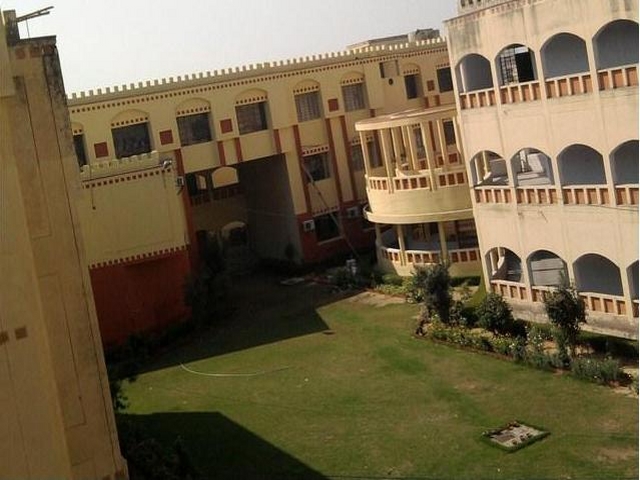In an increasingly digital world, having a fast-loading website is essential for schools, especially in a competitive landscape like Agra. A slow website can deter prospective students and parents from engaging with your institution, negatively impacting enrollment and overall satisfaction. Fortunately, ensuring a fast-loading school website doesn’t have to break the bank. Here are some budget-friendly strategies to enhance your website’s speed.

Table of Contents
Toggle1. Choose the Right Hosting Provider
The foundation of a fast-loading website starts with selecting a reliable hosting provider. Here are some tips to consider:
- Shared Hosting vs. Dedicated Hosting: For many schools, shared hosting is a cost-effective option. However, if your website experiences high traffic, consider upgrading to a Virtual Private Server (VPS) or dedicated hosting to improve speed.
- Local Hosting Providers: Look for hosting companies based in India or Agra that can provide optimized server locations. Local providers may offer better performance for users in your region.
- Review Performance Metrics: Before choosing a hosting provider, review their performance metrics, such as uptime guarantees and load speed reports.
Investing in a reputable hosting provider can significantly impact your website’s loading speed without exceeding your budget.
2. Optimize Images and Media Files
Large image files and media can slow down your website significantly. Follow these practices to optimize images and media content:
- Use Compression Tools: Use free online tools like TinyPNG or ImageOptim to compress images without sacrificing quality. This can drastically reduce file sizes.
- Select the Right Formats: Use appropriate image formats, such as JPEG for photographs and PNG for graphics with transparency. Consider using WebP format, which offers better compression.
- Lazy Loading: Implement lazy loading techniques so images load only when they enter the viewport (the visible area of the webpage). This can speed up initial page loading times.
By optimizing images and media, you can improve your website’s loading speed while maintaining visual appeal.
3. Minimize HTTP Requests
Each element on a webpage, such as images, scripts, and stylesheets, requires an HTTP request to load. Reducing the number of these requests can enhance your website’s speed. Consider these techniques:
- Combine Files: Combine multiple CSS and JavaScript files into single files to reduce the number of requests.
- Use CSS Sprites: Instead of individual images, combine multiple images into one (a CSS sprite). This technique reduces the number of image requests made by the browser.
- Limit External Resources: While third-party resources like fonts and analytics tools can be helpful, limit their use to decrease loading times.
Minimizing HTTP requests can lead to a smoother browsing experience for users.
4. Implement Caching Solutions
Caching stores copies of files and pages to reduce load times for returning visitors. Implement these caching strategies:
- Browser Caching: Set up browser caching to allow users’ browsers to store elements of your site, so they don’t have to reload them on subsequent visits.
- Page Caching: Use caching plugins (for platforms like WordPress) to create static versions of your webpages, significantly speeding up load times.
- CDNs (Content Delivery Networks): Consider using a free or low-cost CDN to distribute your website’s content across multiple servers worldwide. This can speed up loading times for users accessing the site from different locations.
Implementing caching solutions can drastically improve load speeds, enhancing the overall user experience.
5. Optimize Code and Scripts
Clean, optimized code can significantly improve loading speeds. Here are ways to optimize your website’s code:
- Minify CSS, JavaScript, and HTML: Minifying your code removes unnecessary characters, spaces, and comments, reducing file sizes. There are several free online tools available for this process.
- Asynchronous Loading: For JavaScript files, consider loading them asynchronously so they don’t block the rendering of your webpage. This means the browser can load other elements while the script is being fetched.
- Eliminate Unused Code: Regularly review your website’s code to remove any unused CSS or JavaScript that may be slowing down the site.
Optimizing code and scripts can help streamline your website and improve its performance.
6. Regularly Update Your Website
Keeping your website updated can significantly affect its performance. Here are some maintenance tips:
- Update Content Management Systems (CMS): Ensure your CMS and plugins are updated to the latest versions. Updates often include performance enhancements and bug fixes.
- Remove Unused Plugins: Deactivate and delete any plugins that are no longer in use. Excess plugins can slow down your website and create security vulnerabilities.
- Optimize Database: If you’re using a CMS like WordPress, regularly optimize your database by removing spam comments, old revisions, and unused tables.
Regular maintenance helps ensure that your website remains fast and efficient over time.
7. Monitor Your Website’s Performance
Finally, regular monitoring can help you identify performance issues early on. Consider these tools for tracking your website’s speed:
- Google PageSpeed Insights: This free tool provides insights into your website’s performance and offers suggestions for improvement.
- GTmetrix: GTmetrix analyzes your website’s speed and provides detailed reports on elements that can be optimized.
- Pingdom: This tool allows you to monitor your website’s performance and uptime, helping you identify any potential issues quickly.
Monitoring your website’s performance can help you stay proactive about speed improvements and maintain an optimal user experience.
Conclusion
Ensuring a fast-loading school website in Agra on a budget is achievable with the right strategies. By focusing on choosing the right hosting provider, optimizing images and code, implementing caching solutions, and regularly updating your website, you can create a seamless online experience for prospective students and parents. In today’s digital landscape, investing in a fast-loading website is crucial for enhancing user satisfaction and increasing enrollment rates. With these budget-friendly tips, your school can thrive online while keeping costs manageable.


No responses yet